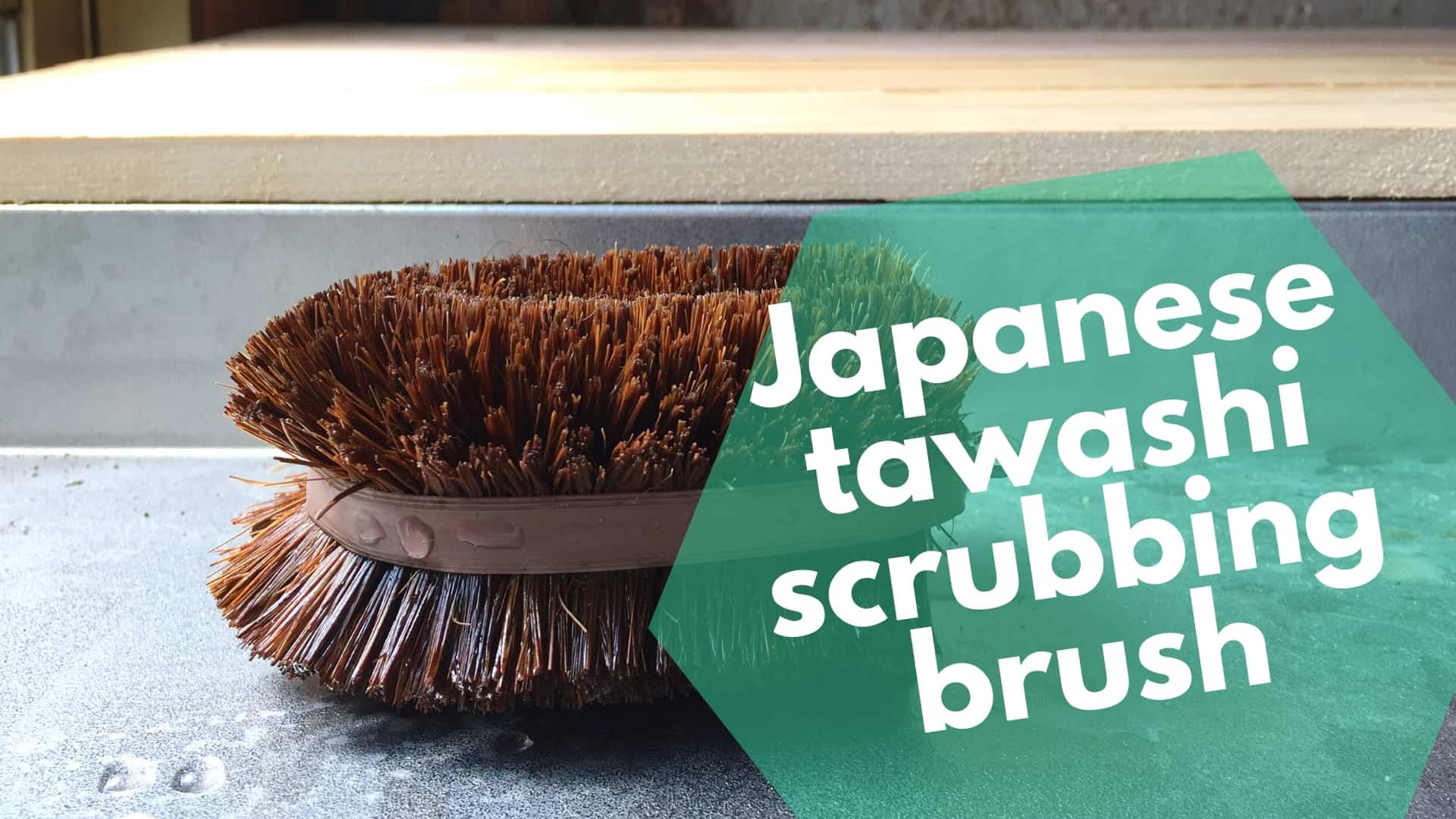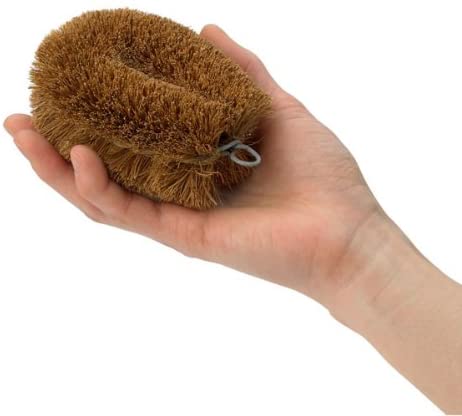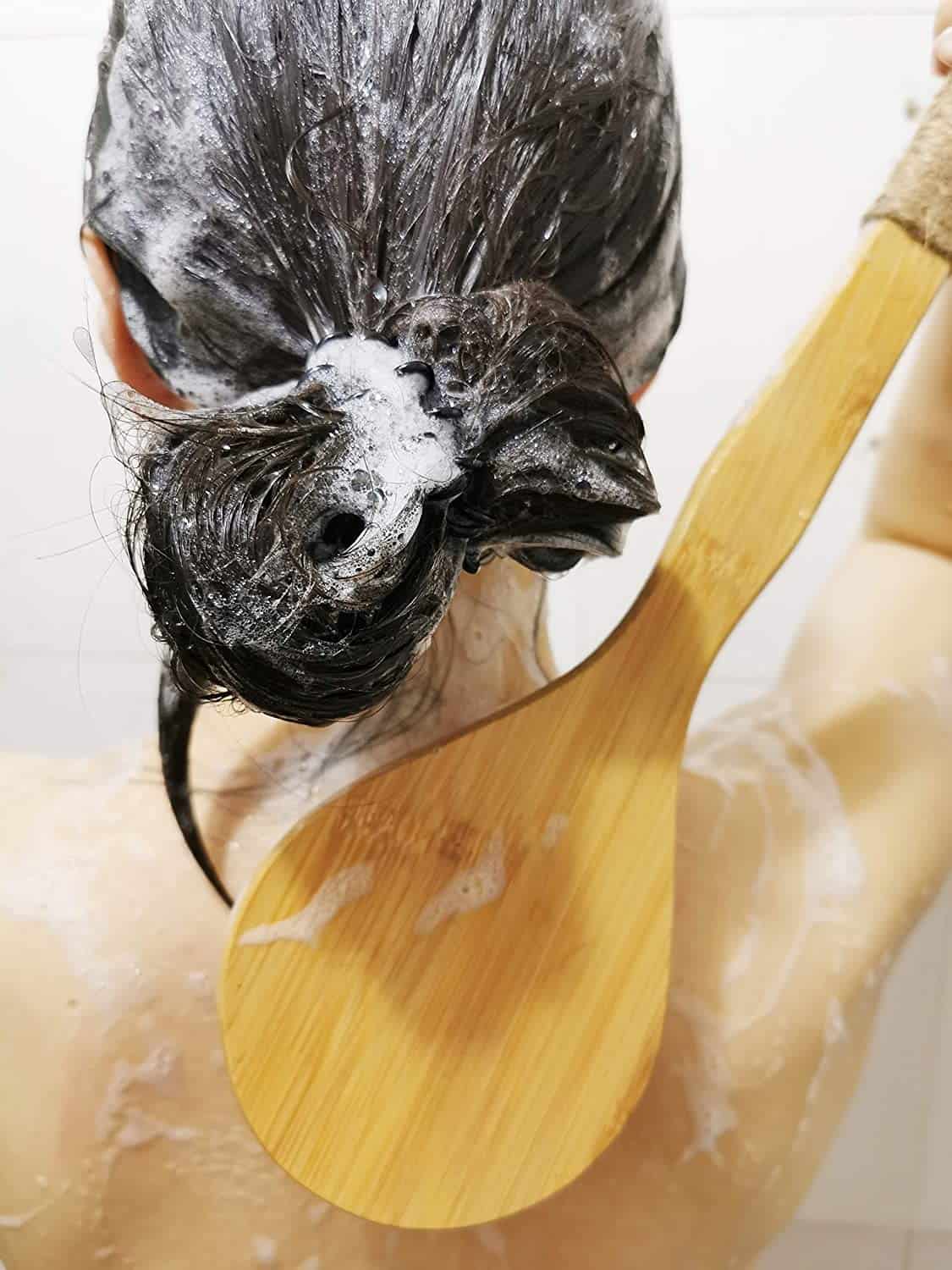Japanese Tawashi brush: 7 different types of brushes & their uses
Exploring Japan through its charming streets, culture, and cuisine is a magical experience in itself.
And, even if you have not been there in the flesh you might have met some Japanese people, been to a Japanese restaurant in your corner of the world, or watched popular Japanese films (with subtitles!) sometime in your life.
We certainly have and as you can tell, we at Bitemybun have been hooked on all things Japan since our first few encounters!

While we love to give you recipes that achieve authentic flavors and textures, today we’ll skip to the part where you’ve eaten and it’s time to clean up your delicious mess.
We will be right here with you, and we’ve brought a ‘friend’ along to show you a new way of life.
That is – if you are still using a regular sponge, kitchen towel, and steel wool to scrub away dirt (not to mention more than half of your nail beds!)
This same ‘friend’ will also show you how to stop throwing away the nutrients found in the skin of your fruits and vegetables, and even how to gently exfoliate your skin using a household product sourced from nature.

Check out our new cookbook
Bitemybun's family recipes with complete meal planner and recipe guide.
Try it out for free with Kindle Unlimited:
Read for freeIn this post we'll cover:
Japanese tawashi brush: History and uses
The Japanese tawashi brush is a traditional household scrubbing brush that is made by hand using organic plant fibers.
Earlier versions of the brush were made during the (between 1603 and 1868) using rice straw, but the current design – from the year 1907 – uses fibers from windmill palms and coconut trees.
The waterproof fibers are bent for increased durability and held in place by a metal wire which loops at the center of one long end, creating a built-in hook for convenient storage.
Some tawashi brushes even have a handle attached – making all-purpose use possible. Think brooms, body scrubbers, and cleaning instruments for hard-to-reach areas.
Because the tawashi brush has been a common item in Japanese households for hundreds of generations, the term ‘tawashi’ is loosely used to refer to various forms of scrubbing tools including:
- Man-made polyurethane sponges (‘suponji tawashi’)
- Synthetic nylon sponges (‘nairon tawashi’)
- Acrylic wool sponges (‘akuriru tawashi’) made from artificial fibers – knitted or crocheted
- Gold, brass, and stainless steel brushes (‘kinzoku tawashi’) made from metal
- ‘Eko tawashi’ (eco-friendly tawashi) which is a cotton sponge made from crocheted cotton and is said to create less pollution as it requires no soap or detergent to aid in removing dirt
- Luffa sponge/ luffa brush (‘hechima tawashi’) for gentle body scrubbing and exfoliating
- Kamenoko tawashi, the common scrubbing tool
Kamenoko Tawashi
The most recognized Japanese scrubbing tool is the Kamenoko Tawashi, invented by Nishio Shouzaemon exactly 113 years ago.
If you think about it, the most dreaded task of home-cooking is home-cleaning, especially if you have no help in the kitchen.
And, even if you do, it is a pain to the eye and is the deterrent between you and your next batch of Okonomiyaki!
Knowing this, Nishio Shouzaemon revolutionized the ancient tawashi in an attempt to figure out an easier way to perform burdensome tasks like scouring dirty pots, pans, grill plates, cast-iron cookware, stubborn floors and more!
Some sources say his inspiration came from watching his mother dedicated her life to taking care of the family home and remembering how tiresome it was for her.
Other sources say his invention was as unintended as it is genius because at the time he was a young businessman who was trying his hand at weaving welcome mats to sell at the marketplace.
During the trial and error phase of creating these mats (which failed at removing dirt), his wife picked up a bundle of the raw materials and used it to scrub whatever needed scrubbing around the house.
This prompted the birth of the 20th century Japanese tawashi brush – Kamenoko Tawashi.
It worked amazingly well and Nishio realized that even though the bristles looked hard, they were in fact gentle and at the same time strong enough to remove burnt-on grease, dried-on splatters, and even mildew-infested grouting without damaging the object or surface that is being cleaned.
Ceramicware, Dutch ovens, and white sneakers are no exception!
Cleanliness – referring to spatial sanitation, bodily hygiene and spiritual purity – is one of the highest virtues in Japan.
When you get lost in the cultural bliss of this country, you might notice that there is a general sense of this virtue being upheld by its people.
Go to any public facility and it is one of the first things that stand out.
Bathhouses and schools in Japan reveal that without the Kamenoko tawashi brush it would not be as easy to keep surfaces as pristine as they are on such a regular basis.
The fact that this organic scrubbing brush is made primarily from windmill palm fibers allows another Japanese virtue to be upheld with ease – Mottainai.
‘Mottainai’ is based on Shinto standards and it is a stand-alone exclamation that refers to waste. In Japan, wastage is disgraceful especially when it comes to food, time, and resources.
When something is wasted, the Japanese utter the term ‘mottainai’ to express a deep sense of regret roughly translated as ‘What a waste!’ or ‘Don’t waste!’
The fibers of the windmill palm allow less wastage as the waterproof bristles get better with age (unlike synthetic sponges) and last for years meaning no frequent replacements of essential home-cleaning items and no contributions to air, water, and land pollution.
A definite win for the planet!
It would be safe to assume that Nishio and his wife used less than a handful of Kamenoko tawashi brushes (in total) for the remainder of their human lives due to the longevity of the organic fibers.
This is interesting when looking at it from a consumer’s point of view because a highly effective and long-lasting product such as this could go for hundreds if not thousands of dollars, but $10 will cover your purchase and the only reason you would need to buy more than one is for dedicated usage.
For example, one for general dishes, one for vegetables, one for grill-plates, one for floors, one for the bathroom, one for your face, one for your body… You get the idea!
Japanese Tawashi brush for Skin cleaning
Yes, it was later noticed that the household scrubbing tool did wonders for the skin. That is the skin of fresh produce as well as human skin.
Japanese food is famous for pulling the true taste out of vegetables and enhancing it in various ways when preparing dishes that are unique to the world outside of Asia.
The Japanese tawashi brush has allowed the Japanese community to skip peeling garden root vegetables and certain fruits.
The brush scrubs the skin/peel clean enough to eat and this has the advantage of receiving added nutrients (fiber, vitamins, minerals, and antioxidants) that are usually thrown into the bin or garden compost pile!
The skin on our bodies is the only outfit we cannot change and for this reason, every effort should be made to take care of it no matter which phase of life we are in.
Japanese artisans at businesses like Takada Tawashi have been hand-crafting tawashi body brushes for over seventy years to provide the body access to gentle and effective hygiene tools which double-up as health and beauty hacks.
The tawashi body brush (handheld or with handle) can be used to cleanse and exfoliate the face and body when in the shower or bathtub – using it along with your everyday soap/cleansing medium.
It can also be used as a dry brush before washing in the shower.
Dry brushing is both a way to exfoliate the skin, stimulate the lymphatic system (which rids the body of toxins), increase circulation , and reduce visible cellulite.
Many A-list celebrities who have tried it are obsessed with how it has given their self-care game an edge since adding it into their daily routines.
Where to buy a Japanese tawashi brush
There is no need to make a pit stop at a Kamenoko Tawashi store in Tokyo to get some of the tawashi’s magic into your home, business or body-care routine.
Here are 2 top buys on Amazon:
Best for Household and vegetable skin: Kamenoko Tawashi
‘Tawashi Vegetable Scrub Brush’ by Kamenoko Tawashi

- Uses: Wash fresh produce, scrub kitchenware, and the home.
- Quantity: 1.
- Rating: 4.6 out of 5 stars (512 customer reviews).
- Recommended by Amazon? Yes – highly-rated and well-priced.
What stands out about the brand or product?
This is the original Kamenoko Tawashi brush, which has a turtle logo on the packaging. Reviewers say the tool perfectly nestles into the hand, allowing comfort and pressure control.
They say it is perfect for cleaning root vegetables and kitchen utensils that are usually difficult to clean (like a grater or .)
One reviewer exclaims that it is “A must-try for your beauty routine! You only need to apply a little pressure or you will scratch all of your skin off!’
There is also unanimity amongst customers reporting how durable the tool is.
Some say it was the first time in over 5 years that they have bought a new tawashi, and they are constantly amazed by how clean the bristles stay between uses.
The tawashi has also made a great impression on environmentally conscious consumers.
One customer expressed that the magic brush helps to avoid pollution caused by harmful chemicals found in even the most ‘green-friendly’ detergents and that this product helps their desire to be less wasteful.
Synthetic brushes apparently shed microplastics and enter the ecosystem through the plumbing. Therefore, with organic tools, they can skip buying products that cause this.
Check the latest prices and availability here
Best for Body scrubbing: Chikoni Body tawashi
‘Dry Bath Body Brush Back Scrubber with Anti-Slip Long Wooden Handle, 100% Natural Bristles Body Massager, Perfect for Exfoliating, Detox and Cellulite, Blood Circulation, Good for Health and Beauty’ by Chikoni.

- Uses: Body scrubber, exfoliator, and massager.
- Quantity: 1.
- Rating: 4.3 out of 5 stars (1195 customer reviews).
- Recommended by Amazon? Yes – highly-rated and well-priced.
What stands out about the brand or product?
The brush is attached to a 15.7” long wooden handle which allows you to scrub every part of your body without needing help to reach your back.
The handle is wrapped with organic hemp rope for a sturdy grip in and out of the water and also has a rope loop attached for storage – some customers remove this as the rope is porous and attracts moisture/mold.
A lot of the customers that have bought this brush love the organic bristles on their skin and say the texture is perfect – not too hard and not too soft – which provides a luxurious spa-like experience.
The product is said to be 100% degradable yet some reviewers noticed a plastic plate underneath the bristles.
Some customers report that their brush lasted between 2 and 5 months with differing frequency of usage, and wish it lasted longer as the product itself was great to use.
A few reviewers feel that this specific make is difficult to lather up with soap and that it is more effective for exfoliating than for cleansing.
Overall it is a good buy for the price and versatility that it offers.
Alternative brand:
The Takada Tawashi product range is another Japanese tawashi brand to consider. It offers cleaning tools for both the kitchen and bathroom and also has a luxurious body brush collection.
Takada Tawashi products are not available to order on Amazon. Products can be ordered directly from the Takada Tawashi online store at wholesale price if you are a business.
Conclusion
Not everyone has the chance to experience the gracious hospitality shown in the streets of Japan, witness the charm of Naka-Meguro during cherry blossom season, or be immersed in the cultural buzz found in humble and high-end Izakayas.
Therefore, it brings us so much joy to tell you about our Japanese findings and teach you not only how to achieve some of our favorite flavors and textures but also to show you some life hacks straight out of Japan!
Japanese tawashi brushes clearly have magic bristles and after reading this article, we hope that you will agree!
Here at the magic of Japan is definitely attainable no matter where you are in the world.
Check out our new cookbook
Bitemybun's family recipes with complete meal planner and recipe guide.
Try it out for free with Kindle Unlimited:
Read for freeJoost Nusselder, the founder of Bite My Bun is a content marketer, dad and loves trying out new food with Japanese food at the heart of his passion, and together with his team he's been creating in-depth blog articles since 2016 to help loyal readers with recipes and cooking tips.
